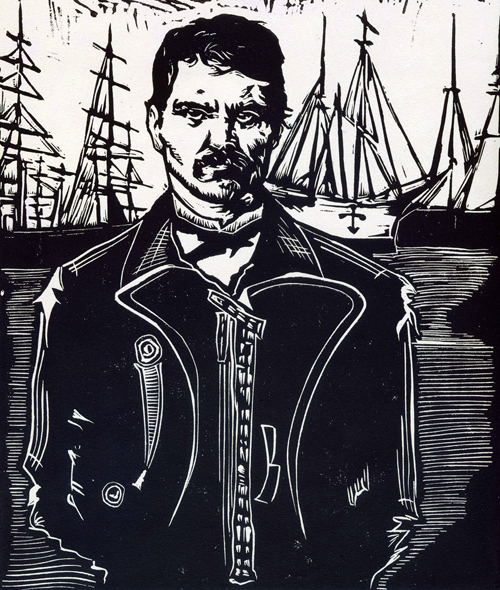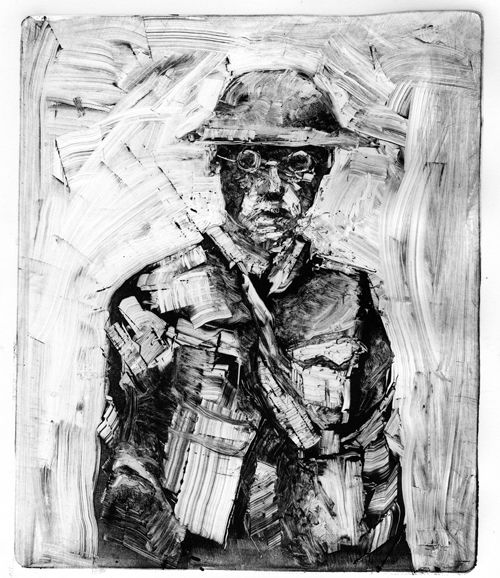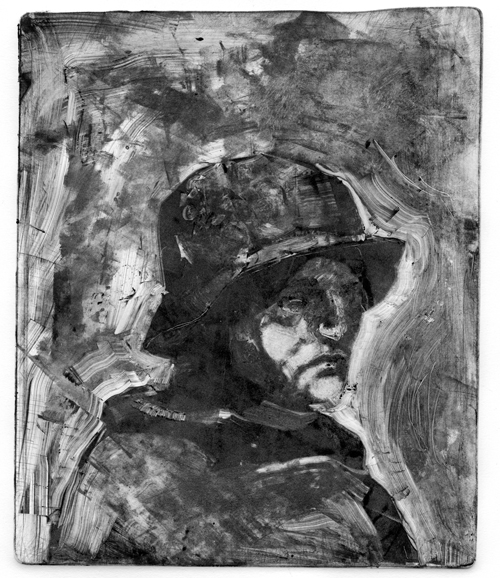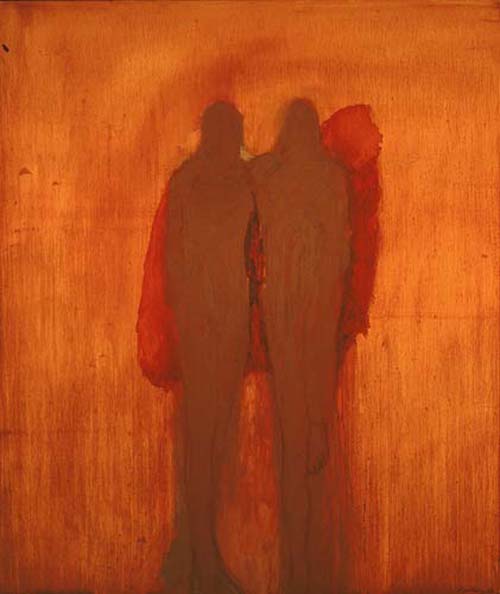P6: Experimental — Final Project
Your Final Project — Brief:
Any technique, any materials, any size. Open subject matter.
You turn in: TWO final images, matted on white matte-board.
Nil Santana
Your Final Project — Brief:
Any technique, any materials, any size. Open subject matter.
You turn in: TWO final images, matted on white matte-board.
All images matted on 16×20 white matte-board
Collography (sometimes misspelled “collagraphy“) is a printmaking process in which materials are applied to a rigid substrate (such as cardboard or wood). The word is derived from the Greek word koll or kolla, meaning glue and graph.
The plate can be intaglio-inked, inked with a roller or paintbrush, or some combination thereof. Ink or pigment is applied to the resulting collage, and the board is used to print onto paper or another material using either a printing press or various hand tools. The resulting print is termed a collograph. Substances such as carborundum, acrylic texture mediums, sandpapers, string, cut card, leaves and grasses can all be used in creating the collograph plate. In some instances, leaves can be used as a source of pigment by rubbing them onto the surface of the plate.
Different tonal effects and vibrant colors can be achieved with the technique due to the depth of relief and differential inking that results from the collograph plate’s highly textured surface. Collography is a very open printmaking method. Ink may be applied to the upper surfaces of the plate with a brayer for a relief print, or ink may be applied to the entire board and then removed from the upper surfaces but remaining in the spaces between objects, resulting in an intaglio print. A combination of both intaglio and relief methods may also be employed. A printing press may or may not be used.
All prints must be mounted ON matte-board (no need to cut windows and mount from the back).
Please download and read the Journal below, then choose one of the three essays for comments.
1. Storytelling in Gropper’s Late Etchings
2. Olivier Deprez’s Storytelling in Le Chateau de Kafka
3. Fritz Eichenberg’s Saint Francis: Showing Humanity’s Duality
This post will be open until April 9th.
Relief printing is one of the oldest forms of printmaking and accessible to everyone, even those without a press. In relief printmaking, the uppermost surface of the material is inked-up, and printed from, as with a rubber stamp. The cut marks below the surface do not receive any ink and therefore will not print.
Linocut technique: a variant of woodcut in which a sheet of linoleum (sometimes mounted on a wooden block) is used for the relief surface. A design is cut into the linoleum surface with a sharp knife, V-shaped chisel or gouge, with the raised (uncarved) areas representing a reversal (mirror image) of the parts to show printed. The linoleum sheet is inked with a roller (called a brayer), and then impressed onto paper or fabric. The actual printing can be done by hand or with a press.
Although linoleum as a floor covering dates to the 1860, the linocut printing technique was used first by the artists of Die Brücke in Germany between 1905-13 where it had been similarly used for wallpaper printing. They initially described their prints as woodcuts however, which sounded more respectable.
As the material being carved has no particular direction to its grain and does not tend to split, it is easier to obtain certain artistic effects with Lino than with most woods, although the resultant prints can lack the often angular grainy character of woodcuts and engravings. Lino is much easier to cut than wood; especially when heated, but the pressure of the printing process degrades the plate faster and it is difficult to create larger works due to the material’s fragility.






Please read the article by Ken Johnson for the New York Times, on Philagrafika 2010, then write your opinion about “Is printmaking dead?”
Deadline for comments: Friday, Feb 24th
Attention: this post is closed for comments.
MONOTYPE:
The printing of an image from a clean, unworked surface containing no scratching or carving (in contrast to an etching plate or woodblock).
A monotype is, as its name implies, a one-of-a-kind image. Ink is applied in any of a multitude of ways to a smooth surface and then transferred to paper. Unlike most printmaking processes, a monotype image is not reproducible: each print is a unique impression. Monotypes have been called the most painterly of prints, because if ink is applied to the plate with a brush, the resulting print may display brushmarks quite similar to those of a painting.


by Josh Burch

by Nathan Oliveira